Korg Minilogue XD: An Analog Synthesizer You Must Buy
Dhir Acharya - Feb 05, 2021
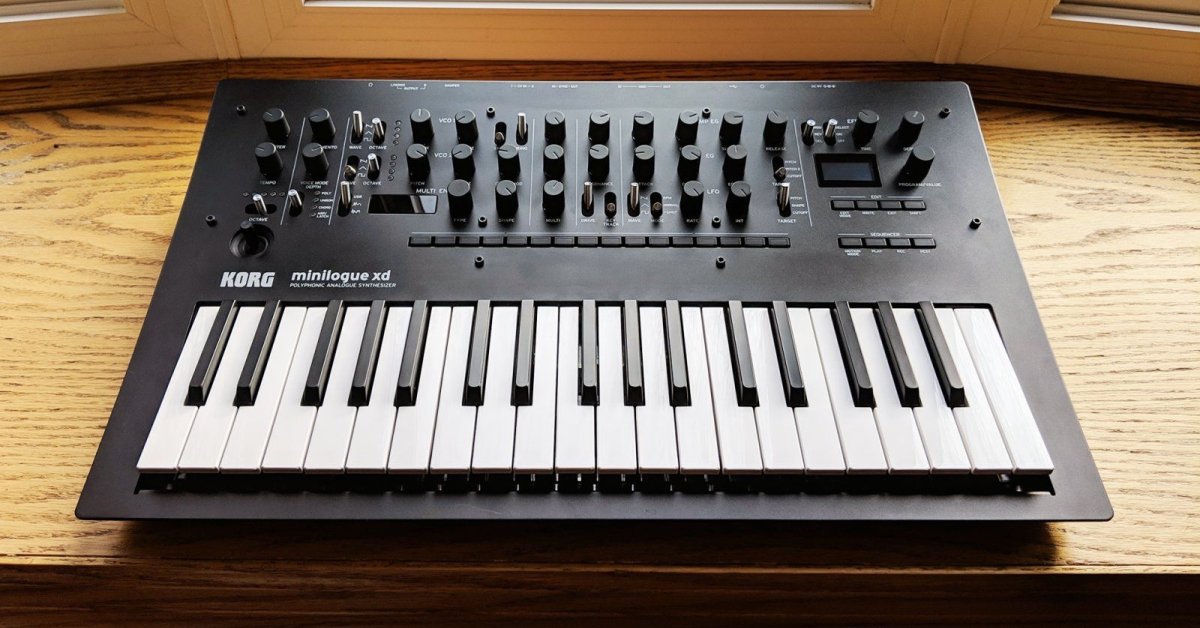
Korg Minilogue XD was announced and launched in 2019. It was positively welcomed by consumers, and this post will discuss the machine.
In May 2019, Korg announced its new analog synthesizer, the Minilogue XD. This model comfortably slots into the Logue range between the Minilogue and Prologue 8. In this post, we will discuss all key information about the Korg Minilogue XD.
Table of Contents
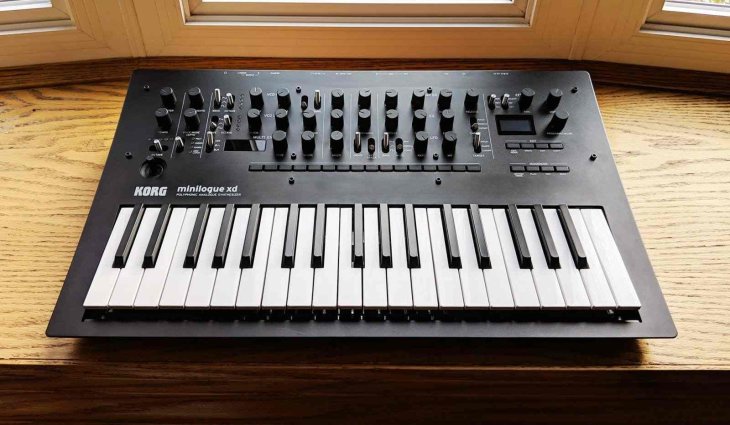
What is an analog synthesizer?
For those who have heard of this term for the first time, an analog synthesizer is a synthesizer using analog circuits as well as analog signals to produce sound electronically.
Minilogue XD release date
In May 2019, the Korg Minilogue XD was announced as a new member of the Volca synth family along with a desktop version of the 2018’s Minilogue XD instrument.
Volca Nubass is a bass synth released alongside the company’s latest vacuum tube technology called Nutube. Korg said that it enhanced the sub-oscillator, oscillator, and drive circuits with rich distortions and warm tones that only a tube can provide. The product was said to launch in August 2019.
How to program Korg Minilogue XD
The Korg Minilogue XD was released with a manual that shows users how to program the model. The manual says that users can edit the parameters that make up a program to modify the sound as they like. To create sound on the Minilogue XD, users can choose one of the two ways.
- Choose an existing program close to the sound they want and edit its parameters to achieve their own custom sound.
- Create their own sound using an init program.
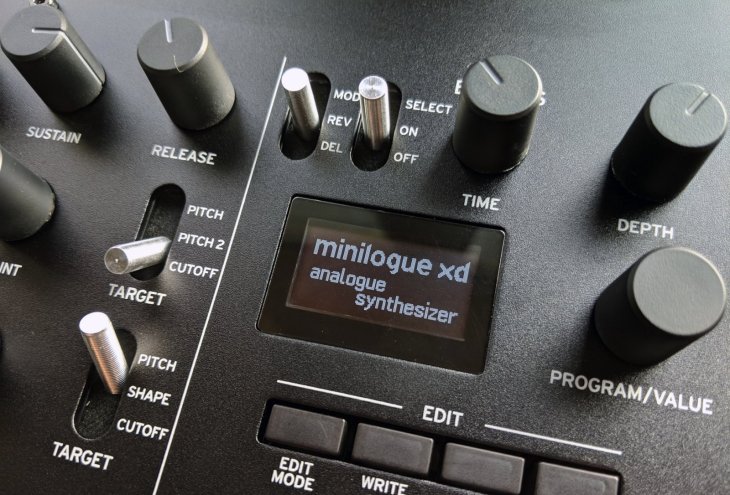
Method 1: Edit an existing program
Step 1: In Program mode, users need to choose the program they want to use as the starting point.
Step 2: Now, they need to use the switches and knobs on the front panel. Consider how different the current program is from the sound you want then use the front panel to edit the necessary parameters.
Method 2: Create a program from scratch
To create your own program, users should use the panel load function, which will load each front panel control’s current settings and give them a simple starting point for their sonic creations.
When exploring the front panel, users will see how each parameter affects the sound so that they can have a better understanding of how each section in the machine functions and how the parameters interact.
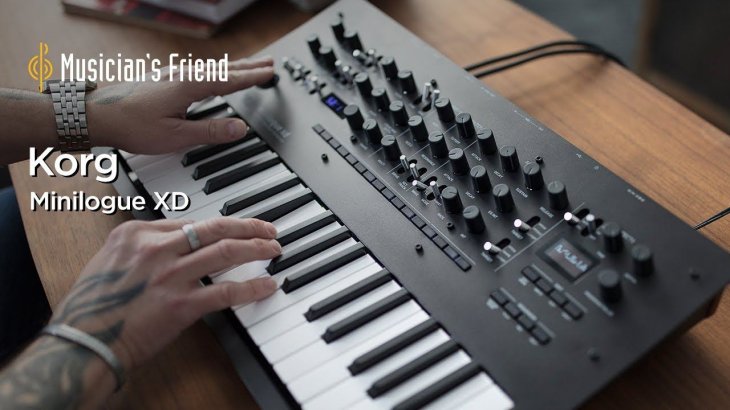
Minilogue XD review
The Korg Minilogue XD module has the same case as the original Minilogue while the build quality is similarly roadworthy and tough. It comes with a metal case, a wooden rear panel, all the pots are metal-shafted and sturdy, finished with black plastic knob caps featuring grey pointer lines to indicate positions.
This model sports the same buttons as the original model, which are tough translucent plastic, but the Korg added white LEDs for backlighting them. The machine also features several paddle selector switches as well as bright-white round LEDs that show octaves, selected modes, and wave selections.
As for the keybed front, Korg still used the three-octave velocity-sensitive Slim-Key keybed that allows users to easily play super-fast lines while spanning a wider range than they can with full-size keys. Besides, it keeps everything compact, making the machine more portable as a whole.
The Korg Minilogue XD sports a spring-loaded metal joystick, which feels natural to use and offers a different amount of bend with each direction. There are two further assignable positions coming into play when users push the joystick up or down. This is amazing because users can obtain some interesting morphing sonics.
In addition, there is a dedicated portamento control and the Voice Mode Depth dial whose functionality changes depending on the mode. In total, there are 4 modes, including Poly mode, Unison, Chord mode, and a latchable arpeggiator for the final mode.
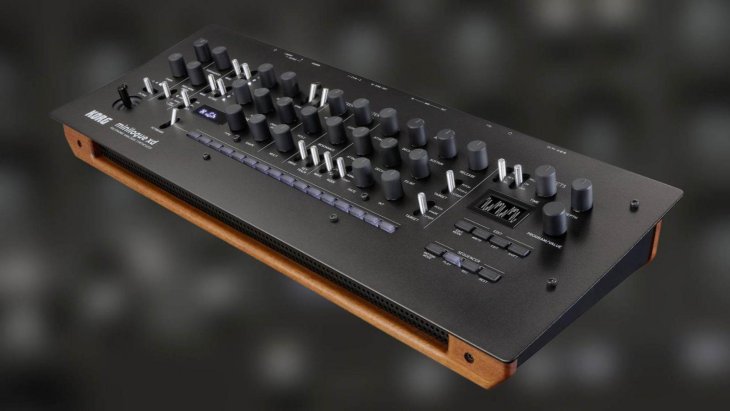
The Multi-Engine on this model is the same as the one of the Prologue, offering a huge amount of sonic scope. However, it is restricted to four-note polyphony. With this new engine, third-party developers can drop oscillators into their slots and expand its sonic palette.
The Korg Minilogue XD is shipped with the Waves oscillator in the first user slot’ apart from that, there is space for 15 more user oscillators along with eight user effects. It also features high/low/peak as well as decimate noise options, the VPM FM mode with 16 oscillators and its own mod envelope. When the VPM is combined with shape modulation, it provides metallic tones, strings, and classic FM Eps, among other things.
There are two VCOs, each of which has three waves along with a pitch and shape control. They sound vibey with solid tuning after a short warmup. Users will also get ring mod, cross mod, and sync to spice up their sounds. The Korg Minilogue XD features a three-way mixer with level controls for the Multi-Engine, VCO 1 and 2. By employing the two-position filter drive switch and pushing the VCO levels, users can push the mixer and filter of the machine from subtle to major overdrive. These features can altogether turn the machine into a fantastically gnarly dirt-machine.
The filer on this model is a two-pole design, featuring many sweet pots as well as a wide range of frequencies. Its voicing is versatile, which works well for every sound. The filter is also good for nasty leads, grainy pads and it can get vicious screamy and creamy. The XD does a great job in dark/moody textured synthscapes and aggressive sounds.
At the same time, Korg made some significant changes to the EG/Mod section. The envelopes sound well-defined and punchy while the release time is very long. The full amp ADSR is still there but the second EG is AD-only, which may limit target options.
Compared with the original model, the Korg Minilogue XD now offers a whole new dimension to the effects section. It comes with the same excellent stereo effects as on the Prologue. Even better, the XD offers simultaneous delay, mod effects, and reverb, all of which sound superb.
All in all, the Korg Minilogue XD is definitely a better machine to buy than the original model with its more powerful sequencer, user-customizable Multi-Engine/effects, extended general versatility, user scales/tunings, real-time control with the joystick, and more.
Featured Stories

Features - Jul 01, 2025
What Are The Fastest Passenger Vehicles Ever Created?

Features - Jun 25, 2025
Japan Hydrogen Breakthrough: Scientists Crack the Clean Energy Code with...

ICT News - Jun 25, 2025
AI Intimidation Tactics: CEOs Turn Flawed Technology Into Employee Fear Machine

Review - Jun 25, 2025
Windows 11 Problems: Is Microsoft's "Best" OS Actually Getting Worse?

Features - Jun 22, 2025
Telegram Founder Pavel Durov Plans to Split $14 Billion Fortune Among 106 Children

ICT News - Jun 22, 2025
Neuralink Telepathy Chip Enables Quadriplegic Rob Greiner to Control Games with...

Features - Jun 21, 2025
This Over $100 Bottle Has Nothing But Fresh Air Inside

Features - Jun 18, 2025
Best Mobile VPN Apps for Gaming 2025: Complete Guide

Features - Jun 18, 2025
A Math Formula Tells Us How Long Everything Will Live

Features - Jun 16, 2025
Comments
Sort by Newest | Popular